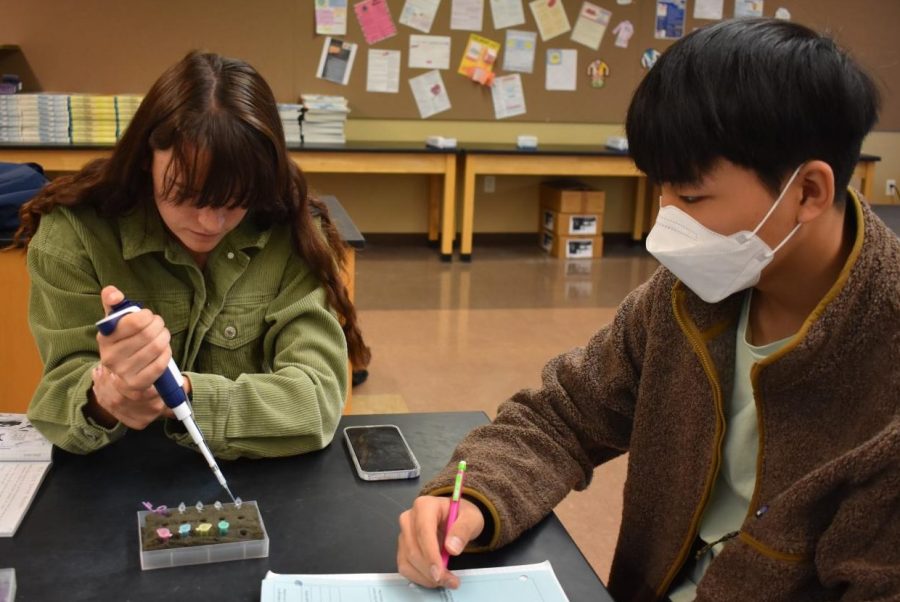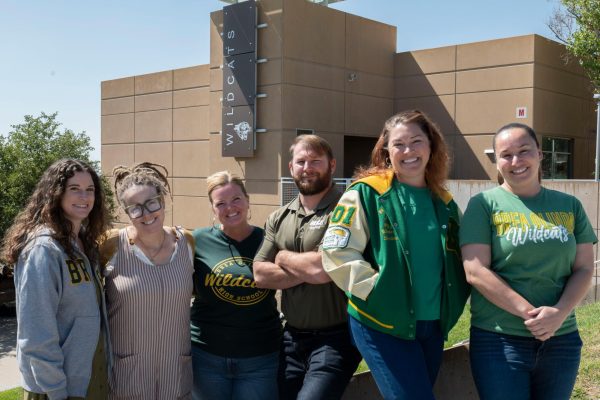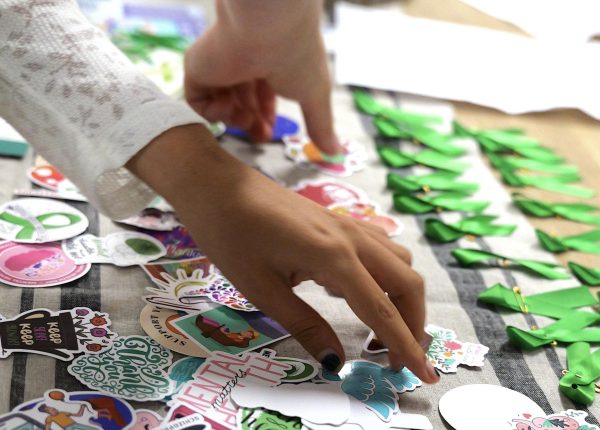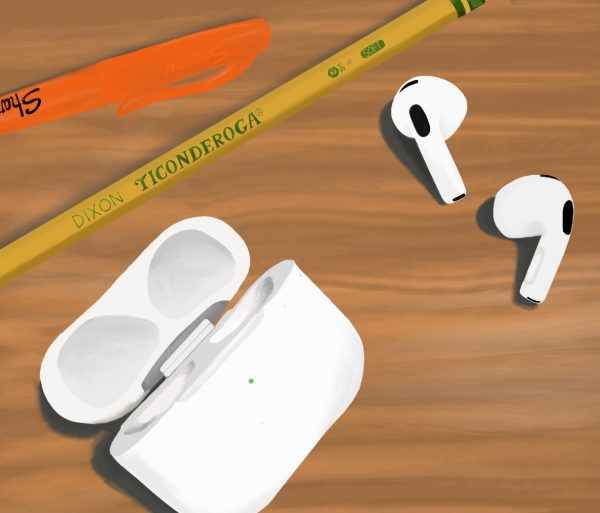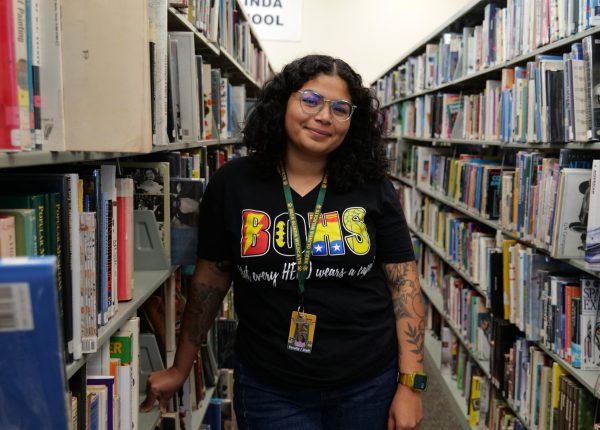Students, Staff React to Mask-Optional Policy
Kendra Painter, senior, and Andrew Chun, junior, participate in a lab during AP Biology class. Starting March 11, students and staff had the option to not wear masks in classrooms.
Had you walked into a BOHS classroom on March 14, you might have been taken aback by the sight of a majority of students and teachers maskless.
Due to a decline in COVID-19 cases, the two-year long mask mandate was lifted in schools and child care facilities by the California Department of Public Health (CDPH) on March 11.
The new policy, which marks the first time since June 18, 2020 that students and staff have the option to wear or not wear masks, was met with mixed reactions from Wildcat students and staff members.
Mentioned most often was that communicating without a face covering has made peer-to-peer and peer-to-teacher interactions easier.
Alisha Choi, freshman, now feels like she can hear significantly better when conversing with classmates and teachers compared to when words were muffled behind a mask. “Conversations have been going smoother,” Choi said. “I don’t have to ask them to repeat themselves anymore because their voices are clearer and easier to understand.”
Diana Lee, junior, acknowledged, “Now that I can hear and read people’s lips when they are talking I can understand them better.”
Some teachers found the masks prohibitive because they muffled their voices when addressing their classes. “I think it’s probably easier [for my students] to hear me now because I’m not wearing a mask when I’m lecturing and talking to the whole room,” Amanda Hefner, English teacher, said.
For teachers like Elizabeth Ureno, history teacher, maskless students enable her to read facial expressions and better recognize those in need of help or those struggling to pay attention in class. “I’ve noticed students nodding their heads and answering ‘yes’ or ‘no’ and asking more questions in class,” Ureno said. “I’ve not been wearing a mask so my students are actually able to look at my face while I’m talking or teaching a lesson.”
For Brianna Casiple, freshman, not having to wear a mask has been a “freeing” experience. “Having to wear a mask for over six hours, with very few breaks to take it off, made it uncomfortable for me to breathe,” she said.
Although Daniella Jota, junior, decided to continue wearing a mask in class, she acknowledged the advantages of having the option to take it off. “Sometimes I put it on and [take] it off. For instance, wearing a mask for a long time makes the back of my ears hurt,” Jota said. “I’m just glad I have the luxury of taking it off when it feels uncomfortable.”
Like Jota, some students appreciate the freedom of choice.
Kylie Chang, junior, puts on her mask in classrooms based on how crowded seating is. “Sometimes my seat is very close to a lot of people so I feel uncomfortable not wearing a mask,” she said. “But then, in [some] classes, people are more spread out so I feel like I can take it off.”
Because the mask-wearing is now optional, teachers can stop being “mask police,” according to Sara Bottalico, science teacher. Bottalico felt that constantly reminding students to properly wear their masks was disruptive when teaching. When she first heard about masks being optional, she was relieved. “Now I don’t have to worry about masks being the number one priority,” Bottalico said. “Instead, I can focus more on teaching and students learning.”
Hefner also sees the benefit of the mask-optional policies in classrooms. “I feel like there’s a little bit less of a struggle over making sure that people are wearing it properly,” she said.
Some students, however, are hesitant to take off their masks in classrooms due to the continued risk of COVID-19 exposure.
At BOHS, certain safety and health measures have been kept in accordance with the district and state recommendations, according to Joy Cordia, assistant principal. “Teachers can still request additional masks and hand sanitizer for their classrooms, just as they have been able to throughout this whole school year. Custodians have maintained the same nightly cleaning process as well,” she said.
Even with the ongoing CIVID-19 prevention protocols, Terri Jun, junior, feels uncomfortable going maskless. “I’m okay with people not wearing their masks because it is their choice; however, I am not fully comfortable, which is why I still wear mine for my safety,” Jun said.
“The only thing that worries me is that I don’t know who’s vaccinated and who’s not,” Alexis Valencia, junior said. “So, I just wear my mask for all my classes.”
For Bottalico, continuing to wear a mask while teaching is a choice made to protect her family, including her three-year-old daughter. (Children must be five years or older to receive the vaccine, according to CDC guidelines.) “To protect my daughter and make sure she doesn’t get sick, I try to wear my mask as much as I can,” Bottalico said.
Rachel Lim, junior, is also motivated to wear a mask for the protection of her family. “I try to protect my health by trying to wear a mask as much as I can to prevent [my dad] from getting sick and having to miss work,” she said. Lim also regularly sees her grandparents who are high-risk for COVID-19, so “wearing my mask is a precaution” she takes to protect her grandparents.
Additionally, with masking now optional, BOHS administrators have emphasized the importance of being respectful towards people’s choices. “We just want to make sure that students aren’t being affected by any type of targeting for choosing to wear their masks,” Eric Barrientos, assistant principal, said. “We want to make sure that students understand that they have the right to wear it if they’d like to, and that they’re not being ostracized for it if they choose to wear it in the classroom or for any staff or students, for that matter.” (None of the BOHS students who are consistently masked that the Wildcat interviewed have felt ostracized or targeted for wearing a mask.)
Some maskless students also expressed relief at finally ridding themselves of “maskne,” a term coined to describe skin conditions like acne, redness, bumpiness, and irritation caused by frequent mask wearing.
When masks were required, Diana Lee noticed adverse changes in her skin. “Because I had to wear my mask at school and then to work, my skin started getting really bad,” Lee said. “It was actually one of the main reasons why I was hesitant to not wear my mask to school because of how self-conscious I was about it.”
Kylie Chang, who also struggled with maskne, has already noticed improvements in her skin since she stopped wearing a mask to school. “Wearing the mask made my skin worse because of the trapped heat and humidity,” she said.
Transitioning to a mask-optional policy marked a turning point for BOHS and its fight against COVID-19. Since the beginning of March, COVID-19 cases have been steadily decreasing with an average of 240 cases per day in Orange County, and the number of vaccinations have been increasing with 75.3% of the Orange County population vaccinated.
Laurel Batchelor, English teacher, is “grateful that COVID-19 numbers have dropped enough so that students and staff have a choice.”
“I think making masks optional is a good sign that things are getting better and we are slowly going back to normal,” Curtis Ahn, senior, said.
Your donation supports the student journalists at Brea Olinda High School! The contribution will help us purchase equipment, upgrade technology, and cover our annual website hosting costs.
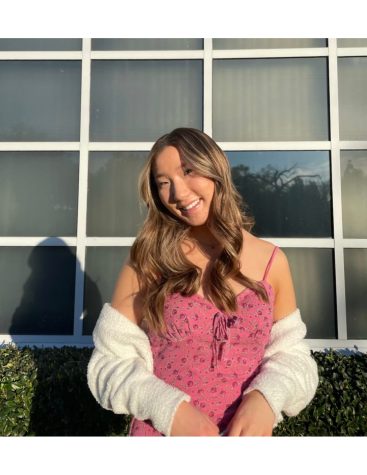
Karis Choi, junior, joined the Wildcat newspaper at the beginning of her sophomore year starting off as a photographer and staff writer and transitioning...
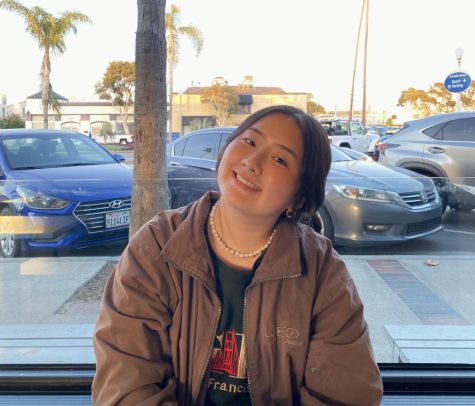
Jasmine Youn is a Wildcat Feature Editor, born and raised from the Bay Area in California. She likes to spend most of her time crocheting, listening to...
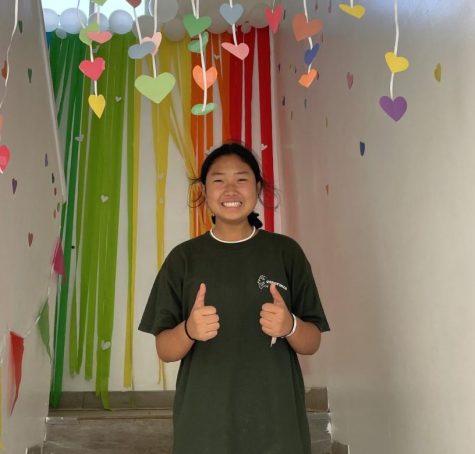
Claire Seo is a senior and this is her fourth year taking photos for the Wildcat newspaper. She is a huge movie buff and loves spending time with her friends,...


